- Open today, 10 am to 5 pm.
- Parking & Directions
- Free Admission
Object of the Week: What’s in a name? Salvator Rosa’s Baptism of the Eunuch
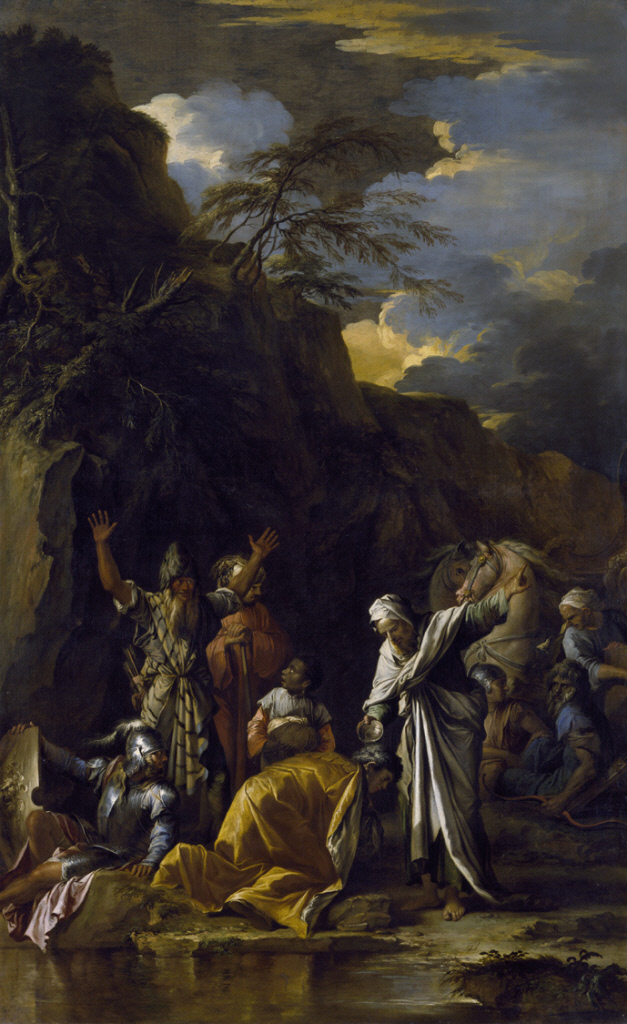
Salvator Rosa, The Baptism of the Eunuch, c. 1660, Oil on canvas, Chrysler Museum of Art, Gift of Walter P. Chrysler, Jr. 71.525
Salvator Rosa painted the Chrysler Museum’s Baptism of the Eunuch as one of a pair of paintings for the Monsignor Giovanni Battista Costaguti in Rome around 1660. The other painting, St. John the Baptist Preaching, is in the Saint Louis Art Museum today. As a man of the church, Costaguti’s choice of religious subject was highly appropriate, and moreover, was cleverly connected to the Monsignor’s name, Giovanni Battista. The painting on the left below shows John the Baptist, the Monsignor’s name saint; the one on the right shows a biblical scene of baptism, the sacrament initiated by John the Baptist. The story of the eunuch’s baptism was almost unique in Italian art but not in Holland, where it was painted by Rembrandt and others. Their Protestant sensibility drew them to a story in which religious conversion was provoked by the reading of Scripture, a key tenet of the Reformation, while Rosa and Costaguti seem to have been more attracted to it for the connection to the patron’s name.
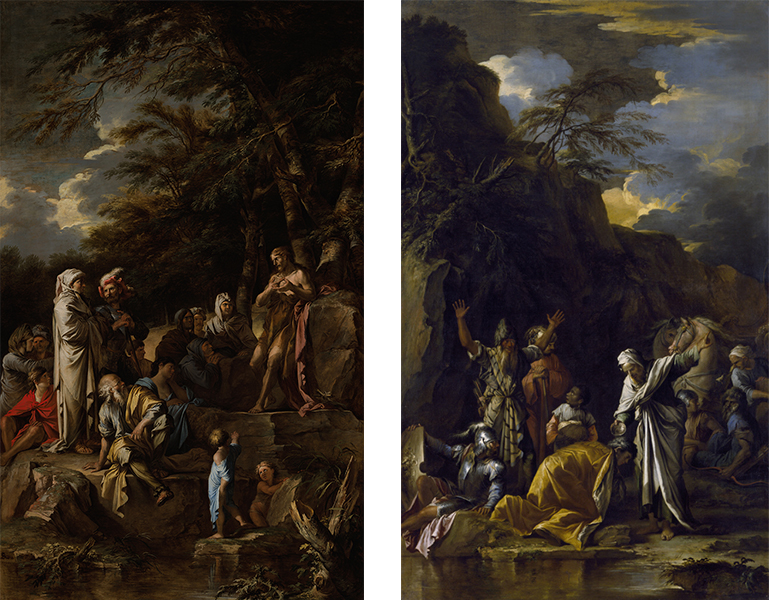
The story in the Chrysler’s painting is described in the Bible in the Acts of the Apostles (8:26-39) and was chosen for its connection to the client’s name. St. Philip, one of the apostles, had been directed by a heavenly angel to travel the road from Jerusalem to Gaza to meet a foreigner, the eunuch of Candace, Queen of Ethiopia. He had traveled to Jerusalem for the sole purpose of worshipping at the Jewish Temple. Philip encountered him while he was reading the book of prophecy of Isaiah, specifically a passage Philip interpreted as a prophecy of the coming and life of Jesus Christ. The eunuch was converted and asked Philip to initiate him through baptism.
The gold-cloaked eunuch is hard to make out as he humbly leans towards Philip, his head in shadow as the apostle pours water over it. In one early drawing, Rosa turned Philip toward the eunuch, but in the end the artist chose to obscure the convert and highlight the action of the apostle. More remarkable are the shocked and dramatic reactions of the eunuch’s associates. The dramatic gesture of Philip complements the marvelous effects Rosa created in the landscape. By shading his head, Rosa avoided drawing attention to the African features of the eunuch.
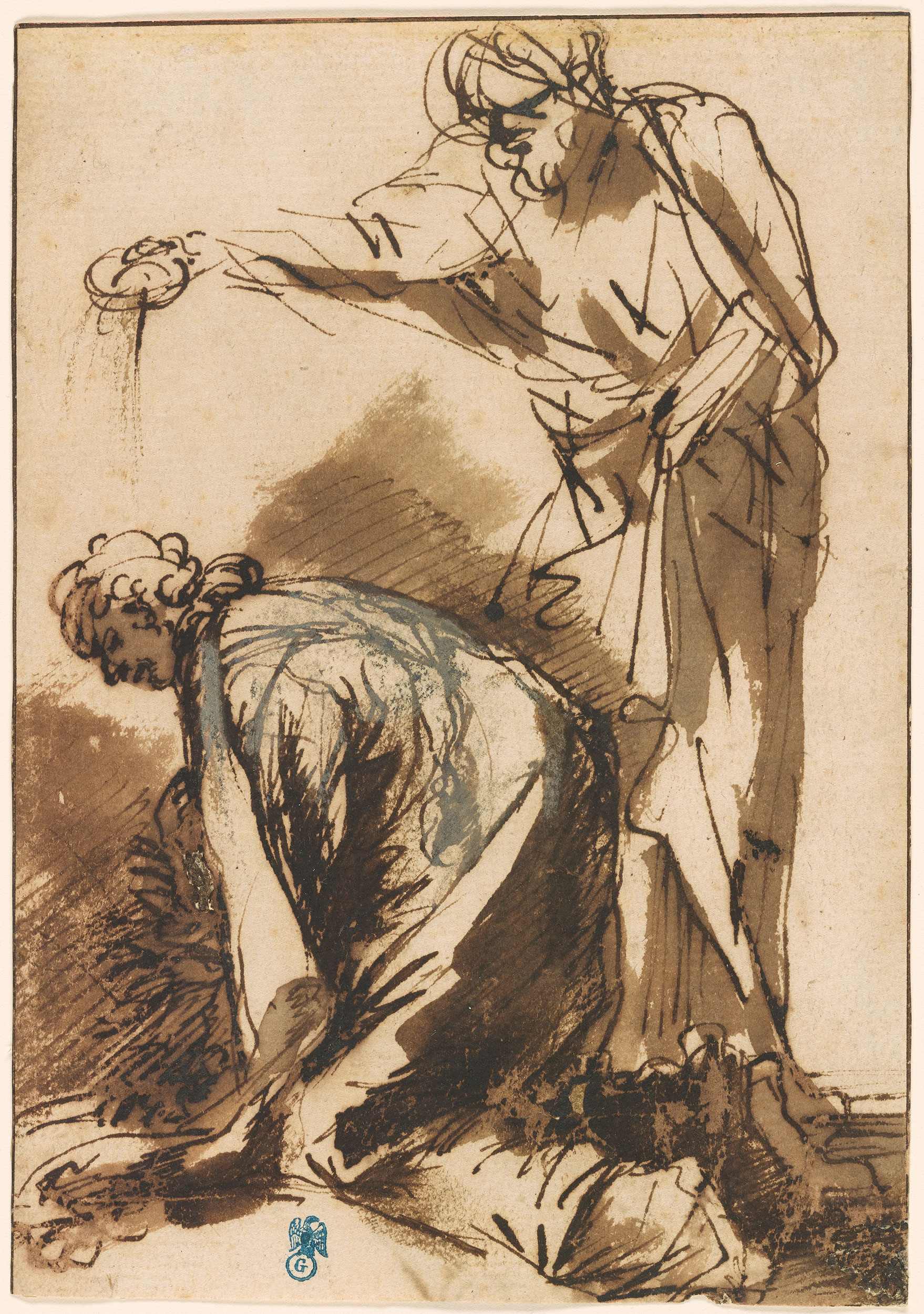
Salvator Rosa, The Baptism of the Eunuch, Pen and brown ink and was with white lead on paper, The Morgan Library, Purchased by Pierpont Morgan in 1909 1, 108a, recto (r)
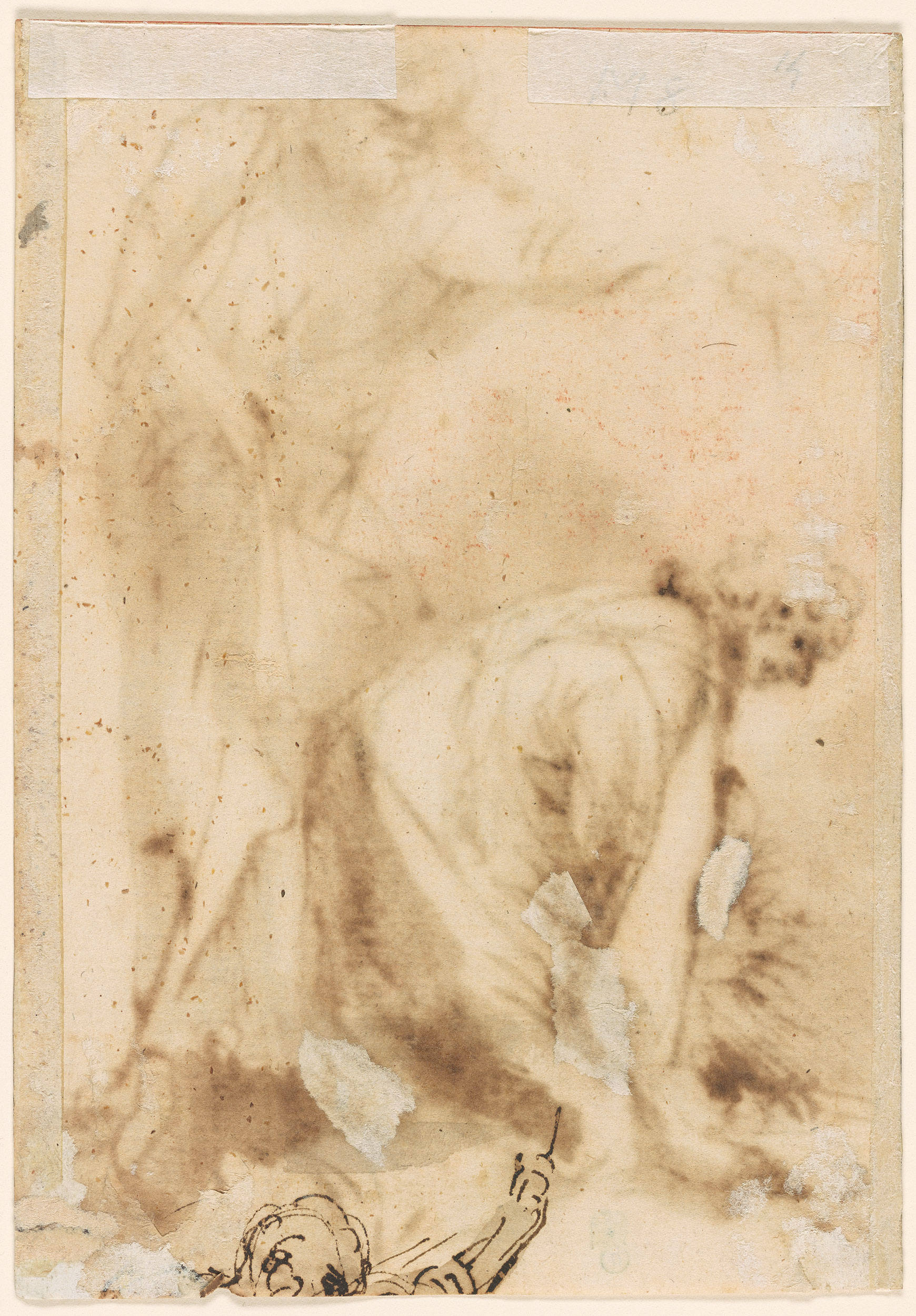
Salvator Rosa, The Baptism of the Eunuch, Pen and brown ink and was with white lead on paper, The Morgan Library, Purchased by Pierpont Morgan in 1909 1, 108a, verso (l)
Salvator Rosa was one of the most fascinating and flamboyant personalities in seventeenth-century Italy; he embraced publicity and controversy to shape his fame and identity. He favored painting landscapes and historical scenes, but also scenes of witchcraft and other taboo subjects. His persona looks ahead to the Romantic era, the nineteenth century when artists, poets, and writers of the 1800s delighted in dramatic and extreme subject matter.
Rosa’s artistic style reflects his training with Jusepe de Ribera in Naples, the leading follower of Caravaggio. Rosa became highly adept at the literary and social skills needed at court. He succeeded with Cardinals, Popes, and other great patrons but often pushed too far. He was skilled at theatre as well as art and competed with sculptor Gian Lorenzo Bernini in staging theatrical enterprises. He brashly insulted Bernini in a play in 1639 and had to leave Rome. The artist found a new home in the relatively freedom-loving court of the Medici family in Florence, where he cultured his taste for the bizarre. He returned to Rome in 1649 and resumed a successful career, which included the commission for the Chrysler painting, where Rosa’s skill in drama is used to full effect.
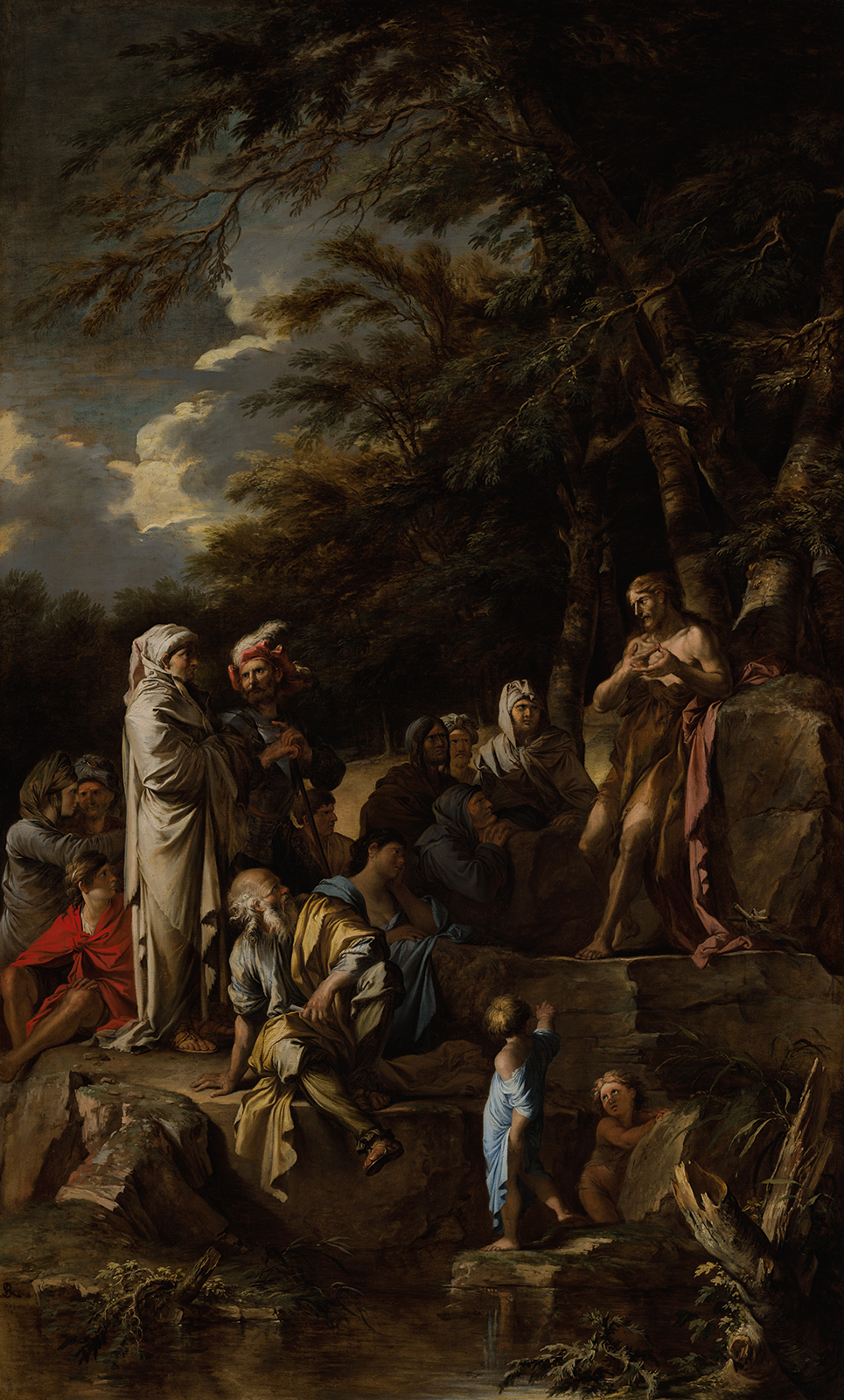
Salvator Rosa, Saint John the Baptist preaching, late 1650s, Oil on canvas. Saint Louis Art Museum, Friends Fund, 72.1970
Walter P. Chrysler, Jr. purchased Baptism of the Eunuch with St. John the Baptist Preaching. The two had been together since they were made, but Chrysler chose to sell St. John the Baptist Preaching to the collector and dealer Eugene Thaw, who sold it to the Saint Louis Art Museum. Chrysler’s vision was to assemble a collection that was as broad and encyclopedic as possible to gift to a public art museum. To this end, he consistently looked for single key works of art by the full range of great masters. Consequently, almost no pairs or series of paintings were given to the Chrysler Museum. Instead, the collection boasts an extraordinary range of European masterpieces of art.
–Lloyd DeWitt, PhD, Chief Curator and Irene Leache Curator of European Art

